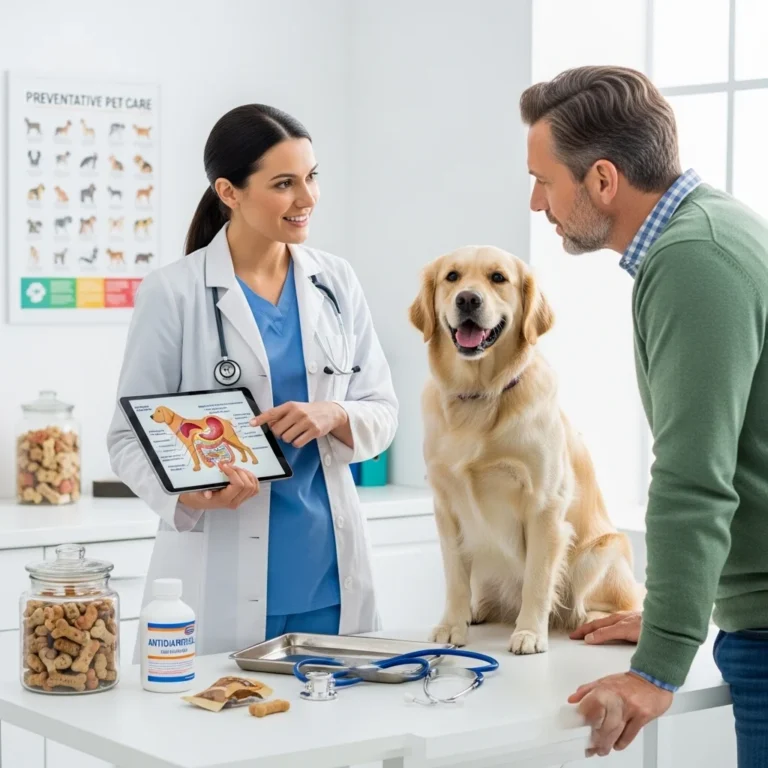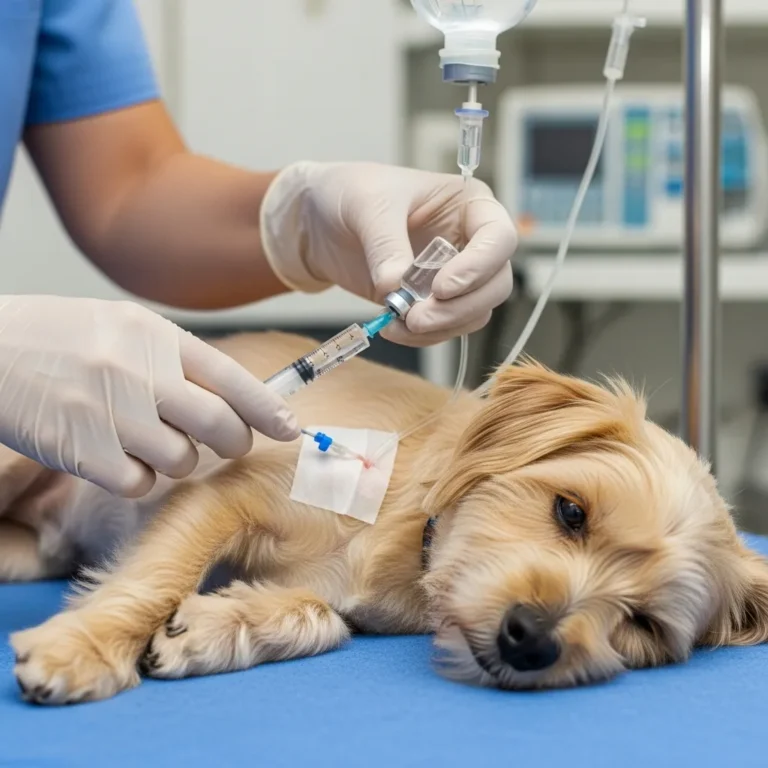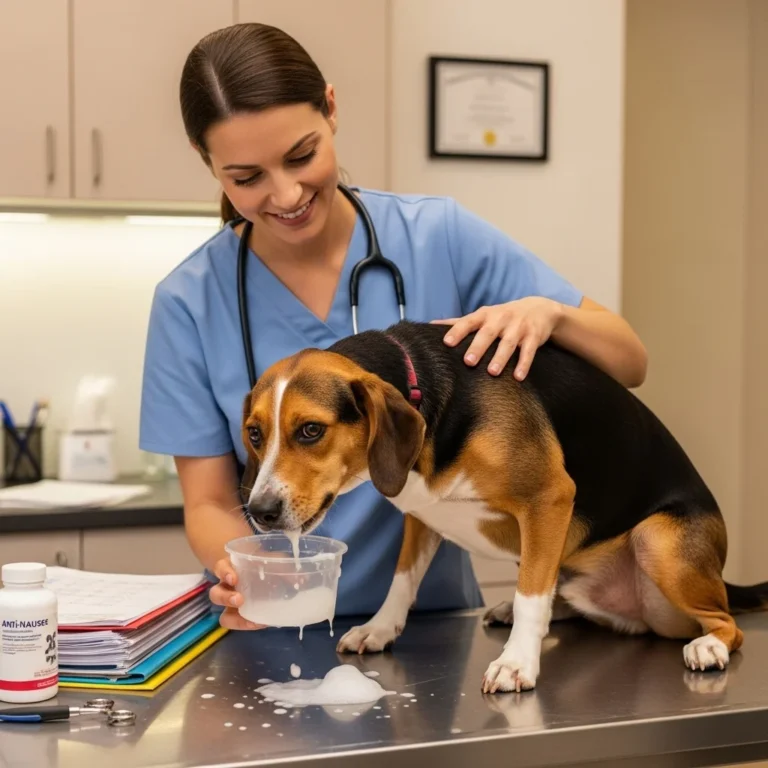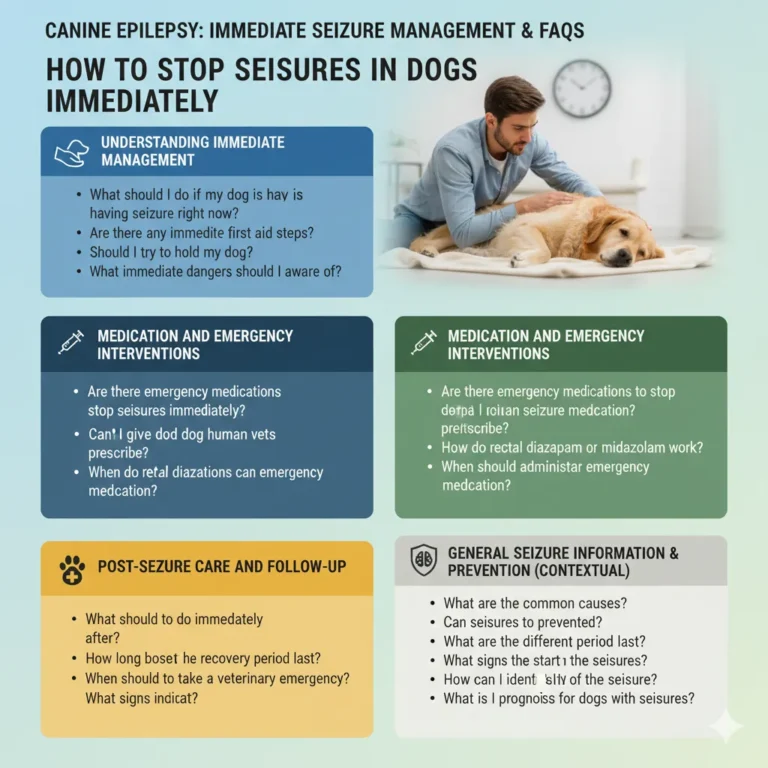
Author: DogsBlogSS Team
⚠️ Disclaimer: This article is for informational purposes only and is not a substitute for consulting a veterinarian.
liver disease in dogs
What is liver disease in dogs?
According to PetMD: Liver disease in dogs is actually a broad term that covers a lot of different conditions where the liver is inflamed, damaged, or not working as it should. According to PetMD veterinarian Jennifer Kvamme, DVM, liver disease can be either primary—meaning the problem begins in the liver itself—or secondary, where something else in the body is causing the liver to suffer.
According to PetMD: The liver is a true workhorse. It removes toxins from the blood, processes nutrients, stores vitamins and glycogen (that’s stored glucose), helps make bile for digestion, and even makes proteins needed for blood clotting.
When disease strikes, many of these functions can go off-track—and that’s why the symptoms can be so varied and sometimes sneaky.
What are the different types of liver disease affecting dogs?
There are several types of liver disease that can affect our canine friends, each with its own root causes and features. Here are some common ones:
- According to PetMD: Portosystemic Shunts (PSS): A congenital blood vessel abnormality where blood bypasses the liver.
- According to greatpetcare: Chronic Hepatitis: Long-term inflammation of the liver. This can be immune-mediated, viral, or due to toxins.
- According to PetMD: Infectious Liver Diseases: Such as canine hepatitis (viral), leptospirosis (bacterial), or certain fungal infections like coccidioidomycosis or histoplasmosis.
- According to PetMD: Liver Masses and Cancer: Tumors in the liver can be benign cysts or malignant cancer (primary or metastatic).
- According to PetMD: Copper Storage Disease: Genetic in some breeds (e.g., Bedlington Terriers, West Highland White Terriers) where copper accumulates in the liver and causes damage.
- According to wikipedia: Hepatic Microvascular Dysplasia (MVD): A microscopic abnormality in blood flow within the liver, sometimes misdiagnosed as a shunt.
- According to PetMD: Liver Failure (Acute or Chronic): When a large part of the liver becomes nonfunctional, often due to toxins, infection, or longstanding disease.
How does the liver function, and what happens when it’s diseased?
Think of your dog’s liver like a busy factory. It takes in raw materials (nutrients, blood), processes them (detoxifies, synthesizes proteins, stores energy), and sends out useful products (bile, clotting factors) while discarding waste. When everything works smoothly, it’s like a well-run assembly line. But when the liver is diseased, the system begins to break down.
- Detoxification falters: Toxins that should be filtered out build up.
- Protein production drops: That can affect blood clotting and other vital processes.
- Energy storage and processing suffers: Dogs may struggle to regulate energy reserves.
- Bile production and secretion go awry: This makes digestion less efficient.
- Regeneration may be impaired: Though livers do regenerate, chronic or severe damage can overwhelm their ability to heal.
When the liver’s functions are compromised, the impact ripples through the body—leading to symptoms ranging from jaundice to neurological issues like hepatic encephalopathy.
Symptoms and Diagnosis
What are the common symptoms of liver disease in dogs?
According to PetMD: Liver disease doesn’t always announce itself boldly—sometimes, it’s a whisper rather than a shout. According to PetMD, common signs include: jaundice (yellowing of the skin, gums, or eyes), decreased appetite, vomiting, diarrhea, weight loss, increased thirst and urination, fluid buildup in the abdomen (ascites), and changes in stool color (gray or yellow).
According to PetMD: Some dogs may also experience more dramatic neurological signs, known as hepatic encephalopathy, such as disorientation, seizures, head pressing, or even blindness.
Are there early warning signs of liver problems in dogs?
Yes—and these can be subtle. According to the PDSA (a UK-based veterinary charity), early signs might include:
- Lethargy or low energy
- Weight loss
- Decreased appetite
- Changes in drinking behavior (either more or less)
- According to pdsa: Vomiting or diarrhea
Because early symptoms often overlap with other common conditions, liver disease can be easy to miss without further investigation.
How is liver disease diagnosed in dogs?
Diagnosing liver disease is a multi-step process, and veterinarians will typically pull together several lines of evidence. Here’s how they usually proceed:
- According to petscare: Physical exam: Your vet may palpate (feel) the abdomen, check for signs like an enlarged or painful liver, or look for jaundice.
- According to PetMD: Blood tests: These include a serum chemistry panel to check liver enzymes (ALT, AST, ALP), bilirubin, and other indicators of liver stress.
- According to lbah: Liver function tests: More specialized tests might include bile acids or ammonia tolerance tests, which reveal how well the liver is doing its job.
- According to petscare: Urinalysis: To check for by-products that indicate liver dysfunction.
- According to PetMD: Imaging: Abdominal ultrasound or X-rays help visualize the liver’s size, texture, blood flow, or presence of masses.
- According to greatpetcare: Biopsy: When necessary, a liver biopsy (via needle or during surgery) is performed to get a definitive diagnosis under the microscope.
- According to lbah: Contrast imaging or nuclear scans: In certain vascular disorders (like shunts), more advanced tests such as positive contrast portography or scintigraphy may be used.
Causes and Risk Factors
What causes liver disease in dogs?
There’s rarely just one culprit—many things can cause or contribute to liver disease in dogs. Some common causes include:
- According to pdsa: Toxins: These are big offenders. Dogs might ingest harmful substances like xylitol (found in sugar-free foods), toxic mushrooms, certain plants, or even contaminated water.
- According to greatpetcare: Medications: Some drugs can stress or damage the liver. Non-steroidal anti-inflammatory drugs (NSAIDs), certain antibiotics, anticonvulsants, and others have all been implicated.
- According to PetMD: Infections: Viral diseases (like infectious canine hepatitis), bacterial infections (leptospirosis), and fungal organisms can damage the liver.
- According to PetMD: Genetics: Breed predispositions matter. For example, Bedlington Terriers, West Highland White Terriers, Doberman Pinschers, and Skye Terriers are more prone to copper storage disease.
- According to PetMD: Congenital abnormalities: Portosystemic shunts are often present from birth.
- According to wikipedia: Microvascular dysplasia: Abnormal blood flow in tiny vessels inside the liver (MVD) is more common in breeds such as Cairn Terriers and Yorkshire Terriers.
- According to PetMD: Endocrine diseases: Conditions like Cushing’s disease, diabetes mellitus, or hyperthyroidism can stress liver function.
- According to PetMD Cancer or tumors: Either primary liver cancer or metastatic tumors spreading from other body parts.
Are certain dog breeds more prone to liver disease?
Yes, breed matters. As noted above:
- According to PetMD: Bedlington Terriers, West Highland White Terriers, Dobermans, and Skye Terriers are genetically predisposed to copper storage disease.
- According to PetMD: Shar-Peis are more likely to develop amyloidosis, where abnormally formed proteins build up in the liver.
- According to wikipedia: Breeds like Cairn Terriers and Yorkshire Terriers may be more susceptible to hepatic microvascular dysplasia.
- According to greatpetcare: According to Dr. Jonathan Lidbury, a board-certified veterinary internal medicine specialist (Texas A&M), Scottish Terriers might be at higher risk for liver cancer, especially when associated with vacuolar hepatopathy.
Can diet affect a dog’s liver health?
Absolutely. Diet plays a crucial role. A healthy, balanced diet supports liver function, while a poor diet—with excessive toxins or inappropriate nutrients—can worsen liver stress.
- According to PetMD: In dogs with liver disease, vets often recommend a low-protein, high-carbohydrate diet to reduce the buildup of ammonia, a toxin that can worsen liver issues.
- According to zooplus: Diets rich in antioxidants, vitamins, and moderate fat are helpful, because the liver is a major site of oxidative stress.
- According to lbah: In specific diseases like copper storage, veterinarians may recommend low-copper prescription diets.
Are there toxins or medications that can damage a dog’s liver?
Yes, and some are surprising. Key culprits include:
- Xylitol, often in sugar-free gum or candy.
- According to PetMD: Blue-green algae, which can be found in stagnant water and is highly toxic.
- According to PetMD: Moldy foods or foods contaminated with mycotoxins (like spoiled grains).
- According to greatpetcare: Medicines, such as acetaminophen (Tylenol), some antibiotics, anticonvulsants (e.g., phenobarbital), and herbal remedies.
- According to pdsa: Plants, toxic mushrooms, or poisonous plants in yards.
Because of these risks, pet owners should be very careful about what their dog has access to, and always consult their vet before giving human medications or supplements.
Treatment and Management
How is liver disease treated in dogs?
Treatment depends heavily on what’s causing the liver disease, how severe it is, and whether the disease is reversible. A good vet will tailor a plan to the individual dog. Typical approaches include:
- According to lbah: Stabilization: If the dog is critically ill, intravenous (IV) fluids may be needed to correct dehydration, electrolyte imbalances, or clotting problems.
- According to PetMD: Treating the underlying cause: For instance, antibiotics for bacterial infections, antifungals for fungal disease, or fixing a shunt surgically.
- According to PetMD: Supportive therapy: This can include medications to reduce toxins (like lactulose), antibiotics, or vitamin supplementation.
- According to pdsa:Liver-protective drugs: For example, ursodeoxycholic acid (to improve bile flow), S-adenosylmethionine (SAMe), and antioxidants.
- According to pdsa: Dietary management: As mentioned, special liver diets help reduce workload on the liver.
- According to PetMD: Surgery: In the case of congenital shunts or tumors, surgical intervention may be possible.
- According to greatpetcare: Long-term monitoring: Regular blood work, ultrasounds, and check-ins are essential to keep track of liver health.
What medications are typically prescribed for liver conditions?
Some of the commonly used drugs and supplements include:
- According to PetMD: Lactulose: This helps bind ammonia in the gut and reduces toxin absorption.
- According to PetMD: Antibiotics: Metronidazole or neomycin sometimes help if there are bacterial overgrowth or infections.
- According to lbah: Ursodeoxycholic acid (UDCA): Helps improve bile flow and reduce biliary toxicity.
- According to pdsa: S-adenosylmethionine (SAMe): A supplement that supports liver cell repair. Vets often recommend it.
- According to PetMD: Vitamin K: If liver disease interferes with blood clotting, vitamin K may be needed.
- According to lbah: Zinc: In cases of copper toxicity, zinc can reduce copper absorption from the gut.
- IAccording to akc: mmunomodulatory drugs: When hepatitis is immune-mediated, medications that reduce immune response may be prescribed. According to the American Kennel Club (AKC) expert advice, these can help control inflammation.
What kind of diet is best for a dog with liver disease?
A liver-friendly diet is often a cornerstone of managing liver disease. Key dietary principles include:
- According to PetMD: Moderate to low protein: Too much protein can increase ammonia production; the goal is to reduce that burden on the liver.
- According to PetMD: High-quality carbohydrates: These provide energy without overworking the liver.
- According to zooplus: Moderate fat: Because very high fat can stress the liver, but the liver still needs fats for essential functions.
- According to zooplus:Antioxidants and vitamins: Including vitamins E and C, which help protect liver cells from free-radical damage.
- According to lbah: Low copper (in specific diseases): Particularly for dogs with copper storage disease, a prescription low-copper diet is often recommended.
Your veterinarian or a veterinary nutritionist should guide the choice of food—especially prescription liver diets made by pet food companies.
Are there supplements that can help support liver function?
According to pdsa: Yes, in many cases. Two of the most commonly recommended are S-adenosylmethionine (SAMe) and milk thistle (silymarin). Veterinarians often prescribe these to help liver cells heal and to buffer oxidative stress.
It’s very important to talk to your vet before giving any supplement—even “natural” ones—because dosage and safety vary, especially in a sick dog.
Can liver disease in dogs be cured?
Sometimes. It really depends on the type and severity of the disease:
- According to PetMD: In acute liver disease (for example, due to a toxin or infection), prompt treatment can sometimes fully reverse the damage.
- According to PetMD: With congenital shunts, surgery might offer a cure or at least greatly improve the condition.
- According to PetMD: For chronic diseases, like chronic hepatitis or copper storage disease, the liver may not recover entirely, but with management, many dogs can have a good quality of life for months or years.
- According to PetMD: In cases of liver cancer or severe cirrhosis, the disease may not be curable, and treatment focuses on palliation and quality of life.
What is the prognosis for dogs with liver disease?
The outlook varies widely:
- According to PetMD: For acute liver failure, if diagnosed and treated early, there is a chance of recovery as the liver regenerates—but it’s often serious.
- According to greatpetcare:In chronic liver disease, many dogs live for years with proper management, but they may require lifelong monitoring.
- According to PetMD:In end-stage disease (like cirrhosis or advanced cancer), the prognosis is more guarded, and decisions about quality of life, treatment intensity, or euthanasia may come into play.
Living with Liver Disease
What lifestyle changes are needed for a dog with liver disease?
If your dog is diagnosed with liver disease, some changes will help support their health and comfort:
- Dietary adjustments: Switch to the vet-recommended liver diet and maintain consistent feeding routines.
- Medication schedule: Ensure you give any prescribed medications or supplements on time and as directed.
- Regular vet check-ups: Frequent blood tests, ultrasounds, or other diagnostics help monitor liver function over time.
- Avoid toxins: Remove access to harmful foods, plants, or chemicals. Keep garbage, medications, and toxic substances safely out of reach.
- Hydration: Encourage good water intake, and make sure your dog always has access to clean, fresh water.
- Rest and gentle exercise: While you want your dog to stay active, avoid overexertion if they’re fragile.
How can I support my dog’s quality of life with liver disease?
Supporting quality of life goes beyond medicine:
- Comfort first: Make sure your dog has a cozy, quiet place to rest.
- Monitor for signs of encephalopathy: Be alert for confusion, head pressing, or circling, which might suggest toxin buildup in the brain.
- Be consistent: Stick to routines around feeding, medications, and vet care—predictability helps both you and your dog.
- Emotional support: Our pets pick up on our emotions. Staying calm and loving helps them feel safe.
- Adjust expectations: While you may hope for a full cure, managing liver disease is often about giving your dog the best possible life, not perfect health.
When should I consider euthanasia for a dog with severe liver disease?
That’s one of the hardest questions a pet parent may face. Here are some signs to consider, along with input from vets:
- Persistent, severe symptoms: Repeated seizures, intractable vomiting, or ongoing ascites (fluid buildup) that isn’t responding to treatment.
- Drop in quality of life: If your dog no longer enjoys walks, eating, or being with you—or shows persistent signs of discomfort or pain.
- Failure to respond to treatment: If, despite every reasonable effort, the condition continues to deteriorate.
- Frequent hospitalizations: Repeated emergencies or hospital stays that are traumatic or draining for both dog and family.
Your veterinarian will help guide you through this decision. It’s important to have honest conversations about prognosis, treatment burdens, and what’s best for your pet’s wellbeing.
Prevention
How can I prevent liver disease in my dog?
While not all liver disease is preventable, there are smart steps you can take to reduce the risk:
- According to pdsa: Vaccinate appropriately: Diseases like infectious canine hepatitis and leptospirosis can often be prevented with vaccines.
- Manage medications carefully: Only give medications prescribed by your vet, and be wary of human drugs without veterinary guidance.
- According to pdsa: Avoid toxins: Keep harmful substances (xylitol, toxic plants, moldy food) out of reach.
- Regular vet visits: Routine check-ups and blood tests can catch liver problems early.
- Good nutrition: Feed a healthy, balanced diet from a young age to support liver function and overall health.
- Be breed-aware: If you have a breed known for liver conditions (e.g., Bedlington Terrier), talk with your vet about screening and preventive strategies.
What routine care can help maintain a healthy liver?
Preventive care for your dog’s liver doesn’t have to be complicated. Here are some practical habits:
- Annual or biannual blood work: Even in apparently healthy dogs, checking liver enzymes can give early warning signs.
- Ultrasound if advised: For breeds at risk, occasional imaging might help detect problems before they become severe.
- Safe environment: Make your home and yard “liver-safe” by removing potential toxins.
- Consistent feeding: Avoid sudden diet changes or “human food” that could stress your dog’s liver.
- Hydration: Encourage frequent access to clean water, especially after exercise or in hot weather.
- Watch for warning signs: Monitor your dog for changes in appetite, energy, stool, or behavior—early action can make a big difference.
Final Thoughts
Liver disease in dogs can feel overwhelming when you first hear the diagnosis. But know this: you’re not alone, and there are real, effective ways to help. With early detection, a caring veterinary team, the right diet, and consistent management, many dogs with liver disease go on to live happy, comfortable lives.
Veterinary experts like Dr. Jonathan Lidbury (Texas A&M, small animal internal medicine) emphasize that while in many cases the exact cause of liver disease remains unknown, supportive care can still make a powerful difference. According to Great Pet Care Meanwhile, according to the American Kennel Club, treatments for conditions like hepatitis or copper toxicity vary, but they often involve a “grab bag” of meds (antibiotics, anti-inflammatories, supplements), diet changes, and close follow-up.
If you suspect your dog may have liver issues—or you’ve already received a diagnosis—reach out to your veterinarian. Ask for a full work-up, and don’t hesitate to inquire about liver-specialist vets or nutritionists. Your puppy (or seasoned companion) depends on you, and even small steps now can yield big benefits down the road.
Notice : The DogsBlogSS editorial team is dedicated to providing accurate, research-based information about dog health, behavior, and care. All our articles are fact-checked using trusted veterinary sources such as VCA Hospitals, Merck Vet Manual, and the AKC.
you may like it




Resources
- PetMD: Liver Disease in Dogs by Jennifer Kvamme, DVM PetMD
- PDSA: Liver Disease in Dogs (UK) PDSA
- Long Beach Animal Hospital: Detailed diagnostics and treatment overview Long Beach Animal Hospital
- AKC Expert Advice: Canine Hepatitis: Signs, Symptoms, and Treatment American Kennel Club
- ASPCA Pet Health Insurance: Types, causes, and prognosis of liver disease ASPCA Pet Insurance
- Great Pet Care: Insights from Dr. Jonathan Lidbury on causes and treatment


